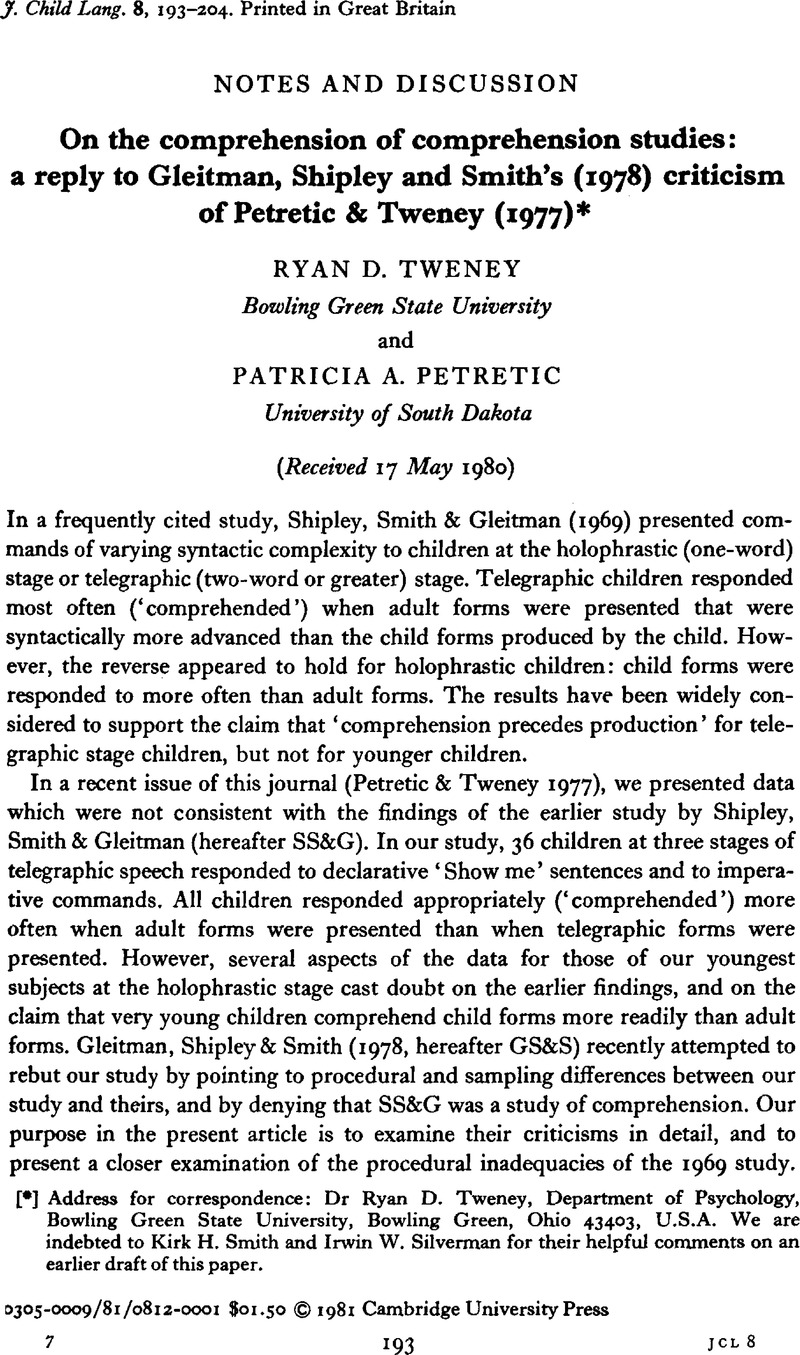No CrossRef data available.
Published online by Cambridge University Press: 26 September 2008

Address for correspondence: Dr Ryan D. Tweney, Department of Psychology, Bowling Green State University, Bowling Green, Ohio 43403, U.S.A. We are indebted to Kirk H. Smith and Irwin W. Silverman for their helpful comments on an earlier draft of this paper.